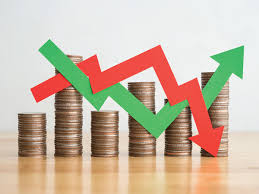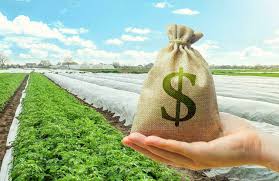It was earlier explained that one method of acquiring capital is by borrowing. Borrowing involves obtaining a certain amount of funds to be repaid at a specified future period. One of the problems involved in using credit is determining whether or not it will pay to borrow.
When borrowing, the total sum called the principal is repaid along with additional charge(s) for the use of the funds. A borrower will be at a disadvantage unless the use of the credit increases net income at least enough to cover the interest on the loan.
It is necessary for the borrower to know in advance what the extra charge is before taking possession of the borrowed funds. This article deals with the concept of interest rates and how they are calculated.
Interest Rate Definition
Interest is the price paid for the use of money, always expressed as a percentage. An annual interest rate of 20% means that the borrower must pay an amount equal to 0.2 of the borrowed fund if the money is used for one year.
Fundamentally, interest equates the future with the present. For example, a 20% interest rate on N1,000.00 to be paid in a year’s time will equal N200.00 at the end of that year.
Interest can be viewed from two perspectives: the credit institution (banks) and the borrower (e.g. the farmer). The bank is the lender, while the farmer is the borrower. From the lender’s perspective, interest is the amount charged to the borrower for the use of money. From the borrower’s perspective, interest is the amount paid to the bank for using the borrowed money.
Read Also: Chiggers: Description, Damages Caused, Control and Preventive Measures
Reasons for Charging Interest

Lenders charge interest due to the alternative opportunities available for the use of funds. The lender must be compensated because control over the funds is lost for the loan period, and there is a risk of losing part or all of the loan if the borrower defaults. Lenders also account for potential loss in purchasing power due to inflation and other macroeconomic factors.
In a free financial market, the established price for the use of money serves as a rationing and allocation mechanism, much like pricing in other markets. Interest rates tend to be high when loanable funds are scarce relative to demand.
High rates discourage some farmers and business owners from borrowing, ensuring that funds are allocated to those who can afford higher rates for more productive purposes. High interest rates also discourage the diversion of production loans to consumption purposes.
On the supply side, higher interest rates provide an income incentive, encouraging lenders to increase the amount of capital available for lending to both producers and consumers.
Unfortunately, in many developing countries, governments often set interest rates well below the equilibrium level. This leads to limited funds being directed away from the most profitable uses and provides savers with little incentive to increase their savings due to lower returns.
Read Also: 16 Medicinal Health Benefits Of Siraitia grosvenorii (Monk Fruit)
Factors That Affect Interest Rates

Interest rates fluctuate over time, depending on the supply and demand for loanable funds and government regulation of financial markets. Governments use monetary and fiscal policies, as well as central bank interventions, to stabilize the economy. When policies become restrictive, borrowing costs increase; when policies become more expansive, interest rates fall, encouraging borrowing.
Interest rates are particularly important in making decisions about long-term loans compared to short-term loans. For instance, an interest rate of 8% or 16% may not be significant when borrowing for an 8-month farm operation but takes on greater importance for a 10- to 15-year loan to purchase a tractor.
Thus, a historical perspective on interest rates becomes crucial for borrowers making long-term commitments. Borrowers who take loans at historically high-interest rates should consider including provisions for refinancing if future rates decrease significantly.
There will always be a wide range of interest rates at any given time, particularly between formal and informal lenders. Government regulations often cap interest rates charged by formal institutions, but informal lenders may charge higher rates based on the perceived risk and other factors.
Key Factors Lenders Consider When Setting Interest Rates
1. Risk of Default: Lenders charge higher interest rates to cover the risk of default, especially for small farmers with low income and limited assets for security. In contrast, larger farmers with lower risk of default can borrow at lower rates. Government entities typically borrow at lower rates, except when economic or political stability is in question.
2. Loan Duration: Longer-term loans, due to the uncertainty of inflation and economic stability, usually come with higher interest rates. High inflation combined with low fixed interest rates, often seen in developing countries, drives funds away from agriculture and into other sectors.
Although loans may be repaid in full, long-term lenders may suffer capital erosion due to inflation, where the repaid amount buys less than when the loan was issued. In some developed countries, loans are indexed to adjust for inflation, known as real interest rates.
3. Loan Size: The administrative costs of processing and collecting a loan are factored into the interest rate. For smaller loans, these administrative costs represent a larger portion of the loan and thus increase the interest rate. For example, the administrative cost of making a N500.00 loan may be the same as for a N50,000.00 loan, making small loans comparatively more expensive.
4. Competition Among Lenders: Interest rates can vary within an economy, even on loans of similar size and terms, based on competition. In a village with only one lender, interest rates will be higher compared to a village with multiple lenders competing for borrowers.
This article explained the definition of interest rates, reasons for charging interest on loans, and the factors that influence interest rates. Interest is the price paid for the use of money, expressed as a percentage. It can be viewed from both the lender’s and borrower’s perspectives, with interest representing the cost to the borrower and the return to the lender.
Lenders charge interest to compensate for alternative opportunities, risks, and inflation. Various factors, including the risk of default, loan duration, loan size, and competition among lenders, determine interest rates charged on loans.
Do you have any questions, suggestions, or contributions? If so, please feel free to use the comment box below to share your thoughts. We also encourage you to kindly share this information with others who might benefit from it. Since we can’t reach everyone at once, we truly appreciate your help in spreading the word. Thank you so much for your support and for sharing!
Read Also: Hydroponics Guide 101: All You Need to Know About it






